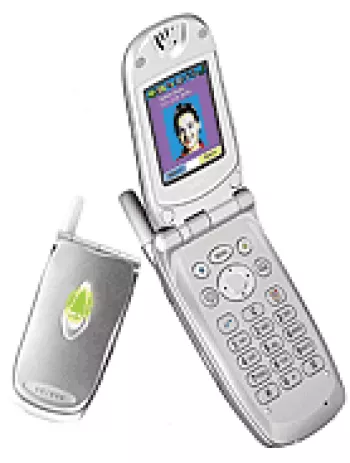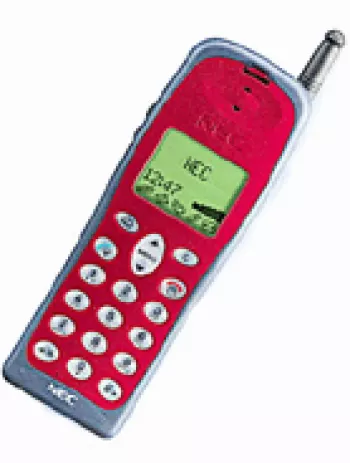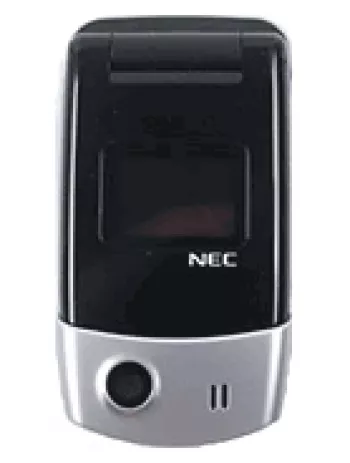
Overview
The NEC e101 was a notable feature phone released in the early 2000s, specifically announced in the fourth quarter of 2004. It is a classic example of early mobile technology, offering basic functionalities with a focus on communication. As a discontinued model, it remains a part of mobile phone history, illustrating the transition from basic to more advanced features in mobile technology.
Design and Build
The NEC e101 is compact in dimensions, measuring 84 x 45 x 24 mm with a weight of only 85 grams. This compact design made it highly portable and convenient to carry. It has a plastic body that was designed for functionality rather than luxury, embodying the utilitarian approach of early 2000s mobile handsets.
Display
The phone features a CSTN display capable of displaying 65,000 colors. The screen size is 1.8 inches, with a resolution of 128 x 160 pixels, offering basic viewing capabilities suitable for reading messages and checking call details. Although not advanced by today's standards, it provided a sufficient interface for the tasks at hand during its time.
Camera
The NEC e101 came equipped with a single VGA camera with a resolution of 0.3 megapixels. While this may seem minimal now, it provided users the ability to capture basic photos—a significant feature for feature phones at the time. However, it did not support video recording or have a front-facing camera for selfies.
Network Capabilities
This device supports GSM network technology, operating on 2G bands such as GSM 900, 1800, and 1900. It includes GPRS Class 10 capabilities for data transmission, but lacks EDGE, positioning it at the entry-level for mobile internet and data transfer speeds during its era.
Memory and Storage
The NEC e101 does not include a memory card slot, limiting storage expansion. It supports a phonebook capable of storing up to 250 entries and retains call records for 20 dialed, 20 received, and 20 missed calls. This reflects the typical user expectation for storage at the time.
Sound and Alerts
Sound capabilities were basic; it did not include a loudspeaker or a 3.5mm audio jack. For alerts, it supported vibration, downloadable polyphonic ringtones, and an integrated composer for creating tones, highlighting the customizable aspect of alerts for users.
Connectivity
The device lacked modern connectivity features like WLAN, Bluetooth, and GPS. It also did not include a built-in radio or specific USB functions, making it more limited in terms of connectivity compared to today's smartphones. However, it supported WAP 2.0/xHTML for basic mobile internet browsing.
Additional Features
The phone was equipped with messaging capabilities including SMS, EMS, MMS, and email, making it adequate for basic communication. It also came with built-in games and Java support, allowing for additional entertainment options. These small but valuable features added to its versatility as a feature phone.
Battery Life
Powered by a removable Li-Ion 780 mAh battery, the NEC e101 could stand by for up to 200 hours and provided up to 3 hours and 20 minutes of talk time. This battery life was competitive at the time, ensuring that users could rely on it for daily use without needing constant recharging.
Conclusion
The NEC e101 encapsulates the fundamental features and limitations of early 2000s mobile technology. It serves as an interesting reminder of how far mobile technology has come, from its compact design and basic cellular functions to the advanced smartphones of today.
Key Features of NEC e101
- Compact and lightweight design with dimensions of 84 x 45 x 24 mm and weight of 85 g.
- CSTN display featuring 65K colors for clear visuals.
- Offers GSM network technology with support for multiple 2G bands (GSM 900 / 1800 / 1900).
- Includes GPRS Class 10 for data connectivity.
- Phonebook with the capacity to store up to 250 entries.
- Simple VGA main camera for basic photography needs.
- Supports messaging options including SMS, EMS, MMS, and Email.
- Browser equipped with WAP 2.0/xHTML for browsing capabilities.
- Java support for enhanced application compatibility.
- Removable Li-Ion 780 mAh battery providing up to 200 hours of standby time and up to 3 hours and 20 minutes of talk time.
Disadvantages of NEC e101
- Lacks EDGE support for faster data transfer.
- Discontinued status - no longer supported or updated.
- Small display size with low resolution (~114 ppi density).
- No external memory card slot - limited to 250 phonebook entries.
- Only VGA camera available and no video recording capability.
- Lacks a front-facing (selfie) camera.
- No loudspeaker included.
- Does not support a 3.5mm audio jack.
- Absence of WLAN, Bluetooth, and positioning technologies.
- No radio functionality.
- Limited battery life with only up to 3 hours and 20 minutes talk time.
- Only available in one color (Silver).

View Also
More Phones
All Rights Reserved +14266 Phones © Mobilawy 2025

























